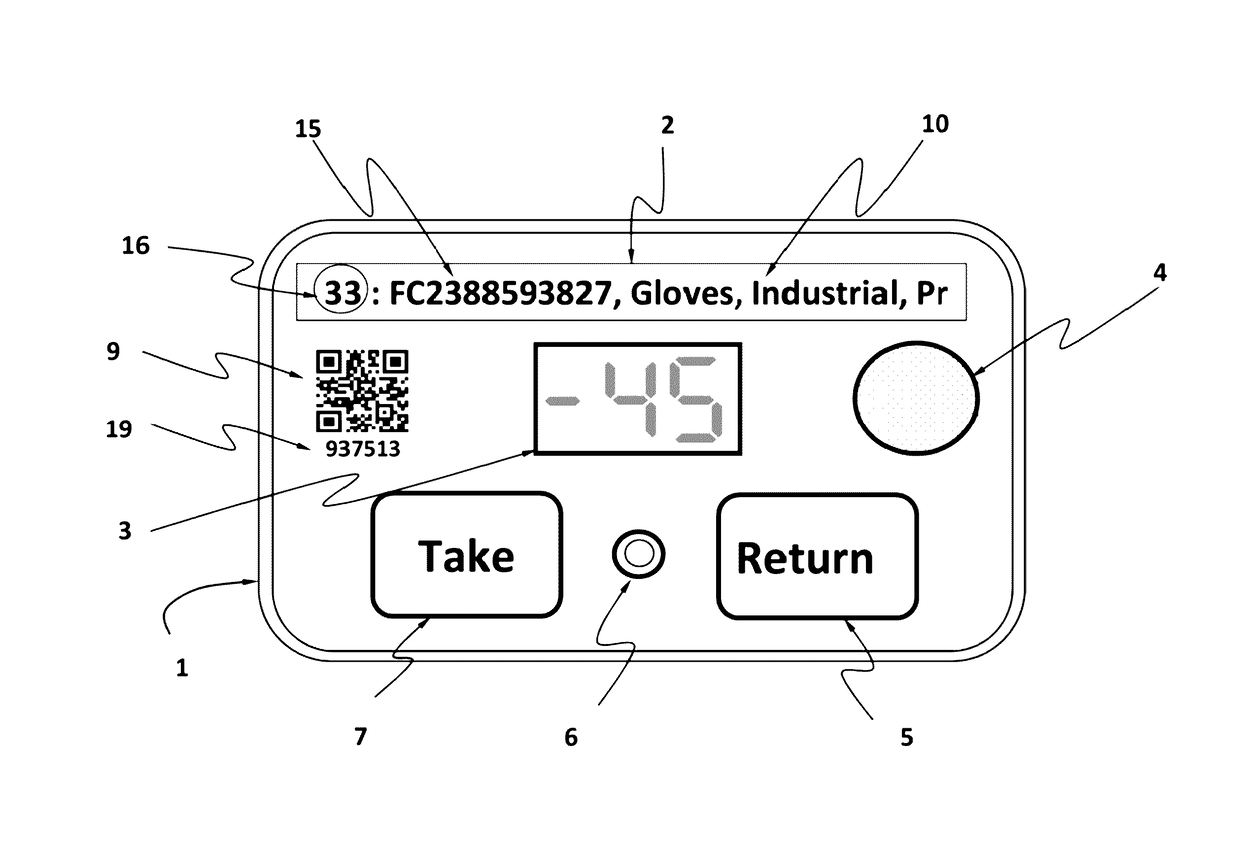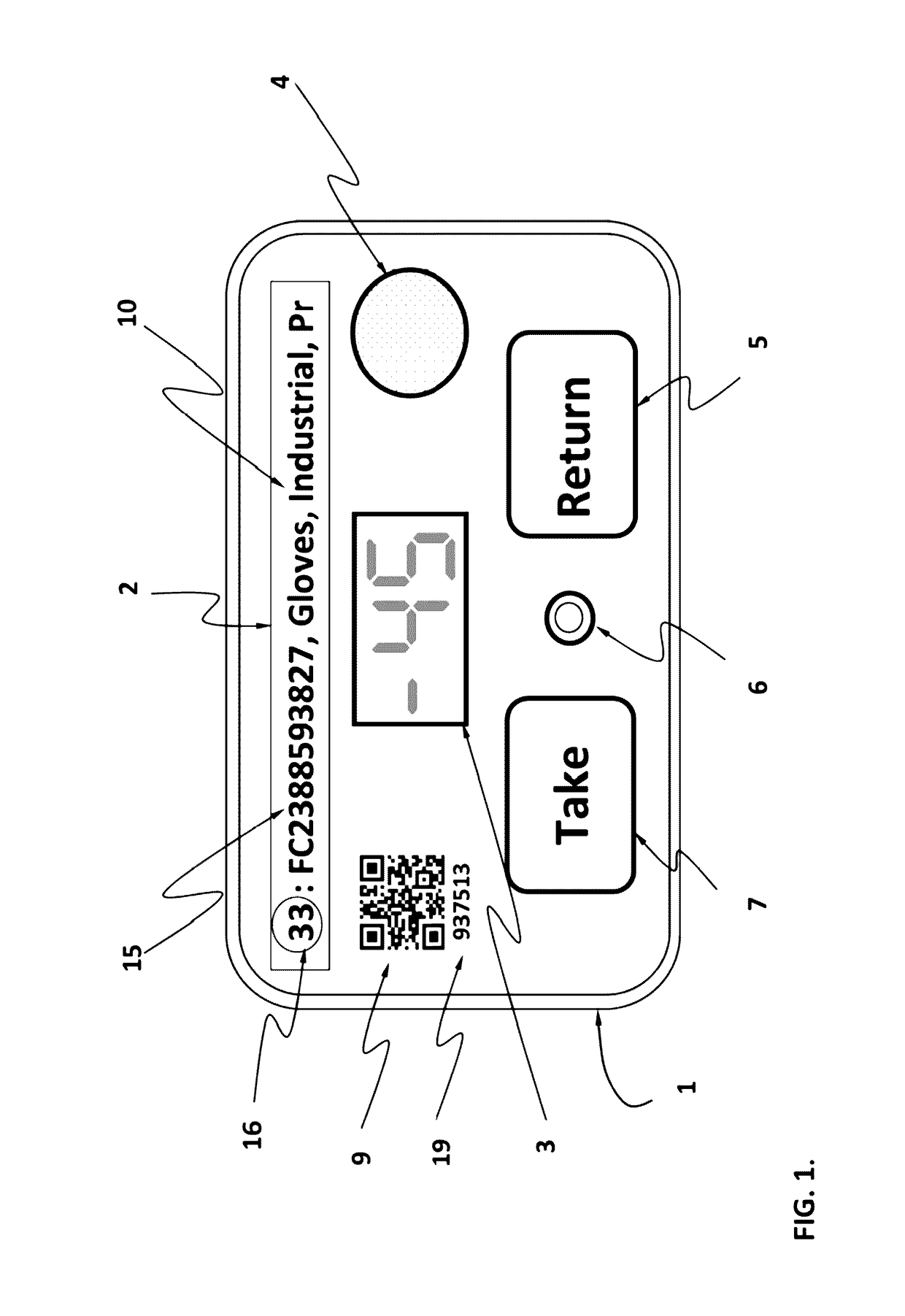Inventory management system
a management system and inventory technology, applied in the field of inventory management systems, can solve the problems of inability to guarantee the accuracy of the inventory over time, human error, and the cost of more secure automated ways of dispensing or delivering one item at a time in a secure automated manner, and achieve the effects of convenient recording of take/return, easy and error-free, and increased use cases
- Summary
- Abstract
- Description
- Claims
- Application Information
AI Technical Summary
Benefits of technology
Problems solved by technology
Method used
Image
Examples
Embodiment Construction
[0018]FIG. 1 shows an example of the elements of the front of a button module. It comprises a housing 1, which may be affixed, secured, attached, or otherwise positioned at any number of locations. On the front of the button module are one or more buttons, typically a Take 7 and a Return 5 button. There may also be affixed a label 2 that contains the item description 10, and usually the item ID 15 (e.g., inventory number) of the item that has been assigned at that location, and optionally, a unique short number 16 assigned by the computer when the label is printed, that is associated in the database to the unique (and unchanging) ID 19 of the button module itself, which number is part of the wireless transmission from the button module. This unique short number 16 can be used as a reference to the item and its location, when the user is looking up information in a user interface, and can be used to retrieve and enter information about that item, with a very quick 2 or 3 digit entry,...
PUM
 Login to View More
Login to View More Abstract
Description
Claims
Application Information
 Login to View More
Login to View More - R&D
- Intellectual Property
- Life Sciences
- Materials
- Tech Scout
- Unparalleled Data Quality
- Higher Quality Content
- 60% Fewer Hallucinations
Browse by: Latest US Patents, China's latest patents, Technical Efficacy Thesaurus, Application Domain, Technology Topic, Popular Technical Reports.
© 2025 PatSnap. All rights reserved.Legal|Privacy policy|Modern Slavery Act Transparency Statement|Sitemap|About US| Contact US: help@patsnap.com



